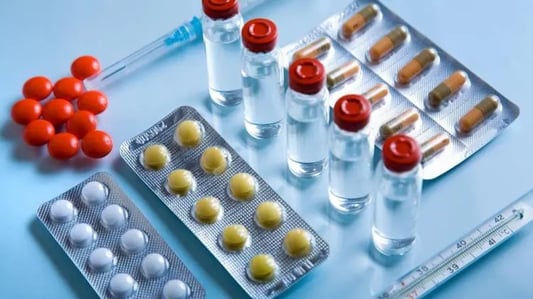What is equivalent to efinaconazole?When it comes to treating fungal infections, one of the most effective medications on the market is efinaconazole. However, for various reasons, you may be looking for alternatives to efinaconazole. In this article, we will explore different options that can be considered as equivalents to efinaconazole. Whether you are searching for a more affordable option or simply want to explore different treatment choices, read on to discover the alternatives to efinaconazole.1. Terbinafine: an alternative to efinaconazoleTerbinafine is a commonly used antifungal medication that can be considered as an alternative to efinaconazole. It works by inhibiting the growth of fungi, thereby treating the infection. Terbinafine is available in various forms, including creams, gels, and oral tablets. It is typically used to treat fungal infections of the skin, nails, and scalp.2. Fluconazole: an alternative to efinaconazoleFluconazole is another antifungal medication that can be used as an alternative to efinaconazole. It is commonly prescribed to treat various fungal infections, including vaginal yeast infections, oral thrush, and systemic fungal infections. Fluconazole is available in both oral and intravenous forms, depending on the severity of the infection.3. ClotrimazoleClotrimazole is an antifungal medication that is available over-the-counter and can be used as an alternative to efinaconazole for certain fungal infections. It is commonly used to treat skin infections, such as athlete's foot, jock itch, and ringworm. Clotrimazole is available in various forms, including creams, lotions, and powders.4. MiconazoleMiconazole is another over-the-counter antifungal medication that can be considered as an alternative to efinaconazole. It is often used to treat fungal infections of the skin, nails, and vagina. Miconazole is available in various forms, including creams, sprays, and suppositories.5. KetoconazoleKetoconazole is a broad-spectrum antifungal medication that can be used as an alternative to efinaconazole. It is commonly used to treat fungal infections of the skin, hair, and nails. Ketoconazole is available in various forms, including creams, shampoos, and oral tablets.6. ItraconazoleItraconazole is an antifungal medication that can be considered as an alternative to efinaconazole for certain fungal infections. It is commonly used to treat fungal infections of the nails and certain systemic fungal infections. Itraconazole is available in oral capsule and oral solution forms.7. CiclopiroxCiclopirox is an antifungal medication that can be used as an alternative to efinaconazole for certain fungal infections. It is commonly used to treat fungal infections of the nails. Ciclopirox is available in the form of nail lacquer, which is applied directly to the affected nails.8. Amorolfine: an alternative to efinaconazoleAmorolfine is another antifungal medication that can be considered as an alternative to efinaconazole for certain fungal infections of the nails. It is available in the form of nail lacquer and is applied directly to the affected nails.9. GriseofulvinGriseofulvin is an antifungal medication that can be used as an alternative to efinaconazole for certain fungal infections. It is commonly used to treat fungal infections of the skin, hair, and nails. Griseofulvin is available in oral tablet form.10. NatamycinNatamycin is an antifungal medication that can be considered as an alternative to efinaconazole for certain fungal infections, particularly those affecting the eyes. It is commonly used to treat fungal eye infections, such as fungal keratitis.Efinaconazole is used to treat toenail infection caused by fungus. It works by stopping the growth of certain types of fungus. Efinaconazole belongs to a class of drugs known as azole antifungals.This medication treats only fungal infections. It will not work for other types of infection, such as those caused by bacteria. Unnecessary use or overuse of any drug used to treat infection can lead to its decreased effectiveness.Quote InquiryContact us!










